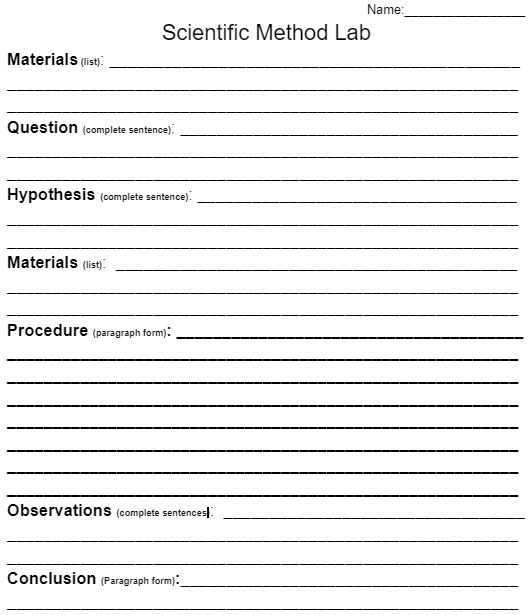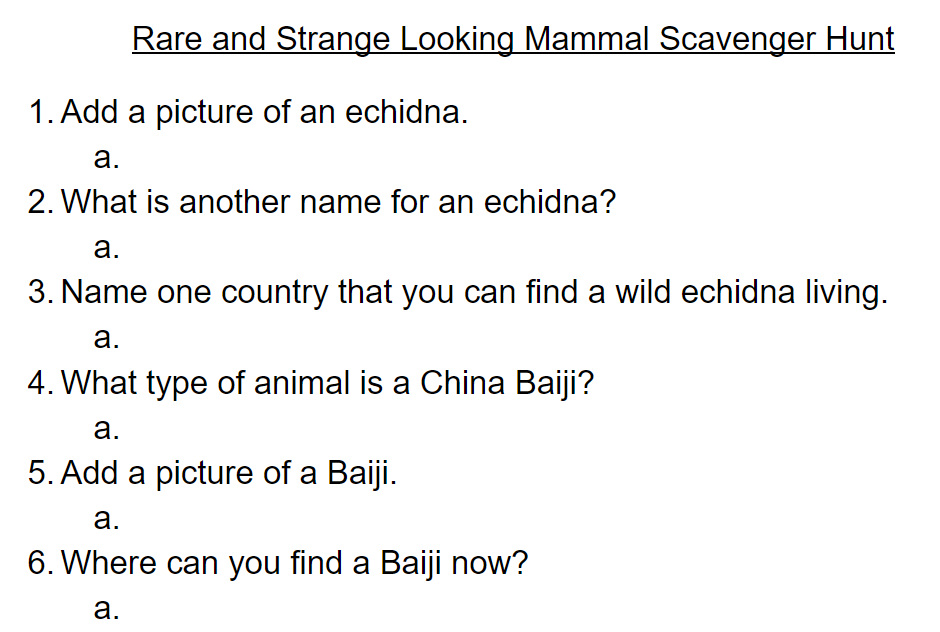Scientific Method Lab Sheet Google Doc
Image

This is a scientific method lab sheet geared to merge a science experiment with grammar by using complete sentences.

This is a scientific method lab sheet geared to merge a science experiment with grammar by using complete sentences.

Students will have fun researching 5 unique mammals that are funny-looking and just plain strange. Students will discover some interesting facts about each one, learn how to copy and paste a picture into a Google doc document, and some of the mammals' locations.
The mammals are the Javan Rhino, the Cuban Solenodon, the Pygmy Possum, the China Baiji, and the Echidna.
Bill Nye said about the Joy of Discovery is awesome. It is the joy of discovery that makes every human being a scientist. We explore, test, hypothesize and form conclusions. Watch this video with your students to see if they agree with what was said. The images and videos attached to this video are beautiful.
This is a TEDed lesson on how our noses smell and detect odor. This is a cartoonized video with a great story track. This science video goes through the different parts of the nose and some parts of the tongue as taste and smell go hand in hand. The video also discusses the difference between certain animals and our human noses. One of the interesting science concepts that is discuss is why some people lack a sense of smell.
How many times to we tell our children to put on warm clothes during the
winter so that they won't get a cold? This video does an excellent job visually presenting and discussing the effects of the common cold. Why are we really more likely to get sick in the fall and early winter? What is causing the illness to spread so easily during the cold season?
In this science video, we see how a mosquito behaves, a little bit about the history of mosquitoes, and the possible side effects from a mosquito's bite or sting. If you are teaching a science lesson on parasites, then this video would be a good one to introduce the blood sucking mosquito.
When you are teaching a unit on Astronomy, inevitably you are going to get into a discussion with students on the possibility of life outside of our own solar system. This video asks people on the street whether or not they believe in aliens. The responses are great to listen to. The discussion of the video is more about the knowledge of how vast a galaxy really is. If people understood how far a light year actually is, it would be less likely that anybody would believe in the alien types that visit the Earth.
In this video National Geographic takes a look at some rock climbing goats. They discuss some of their strengths and explain how the goats can climb the mountains so well. The footage and voice overs are a lot of fun to watch an listen to.
In this video you will actually get a chance to see how old your ears are. This video does an excellent job explaining the science behind it as well as actually demonstrating this scientific concept to your students and yourself. See how old your ears are.
With this video you can easily start off a class on genetics or reproduction. Simply propose the age old question, "Which came first, the chicken or the egg? Discuss this a little bit with your class and see what they have to say. How much to they understand the theory of evolution and natural selection? Then watch the video as an excellent explanation unfolds.